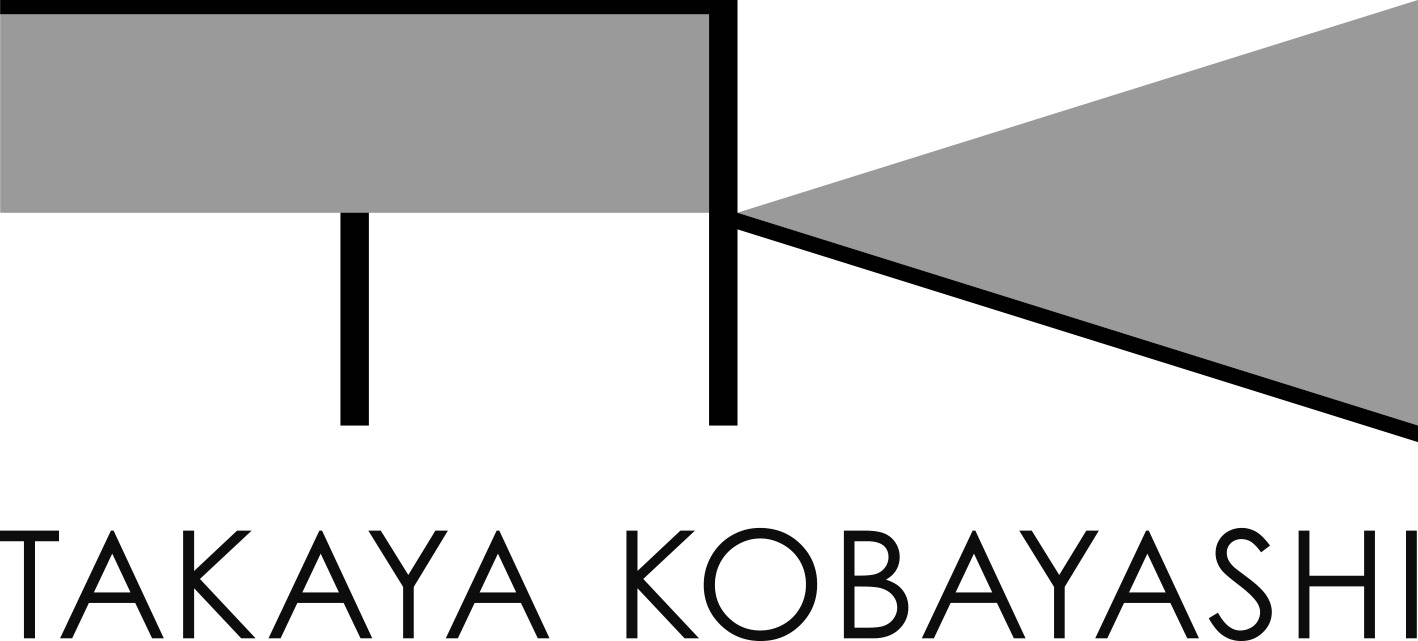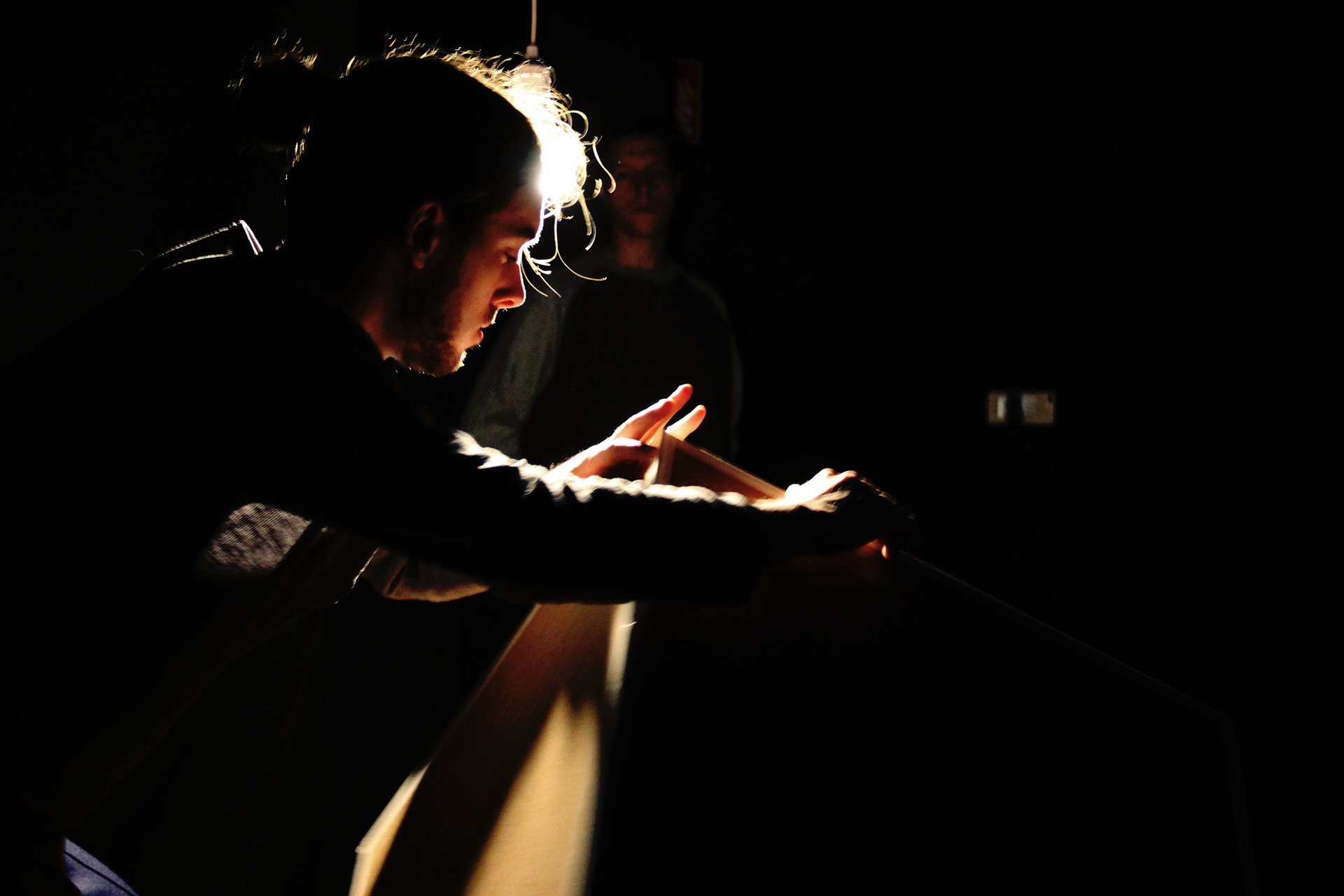
Dance Performance in the ISADORA-Workshop
with
Anne-Laure Jullian de la Fuente,
Viktor Treushchenko-Bernhardt
Performed by
Lucas García
February 2018
TU Berlin, Bühnenbild_Szenischer Raum
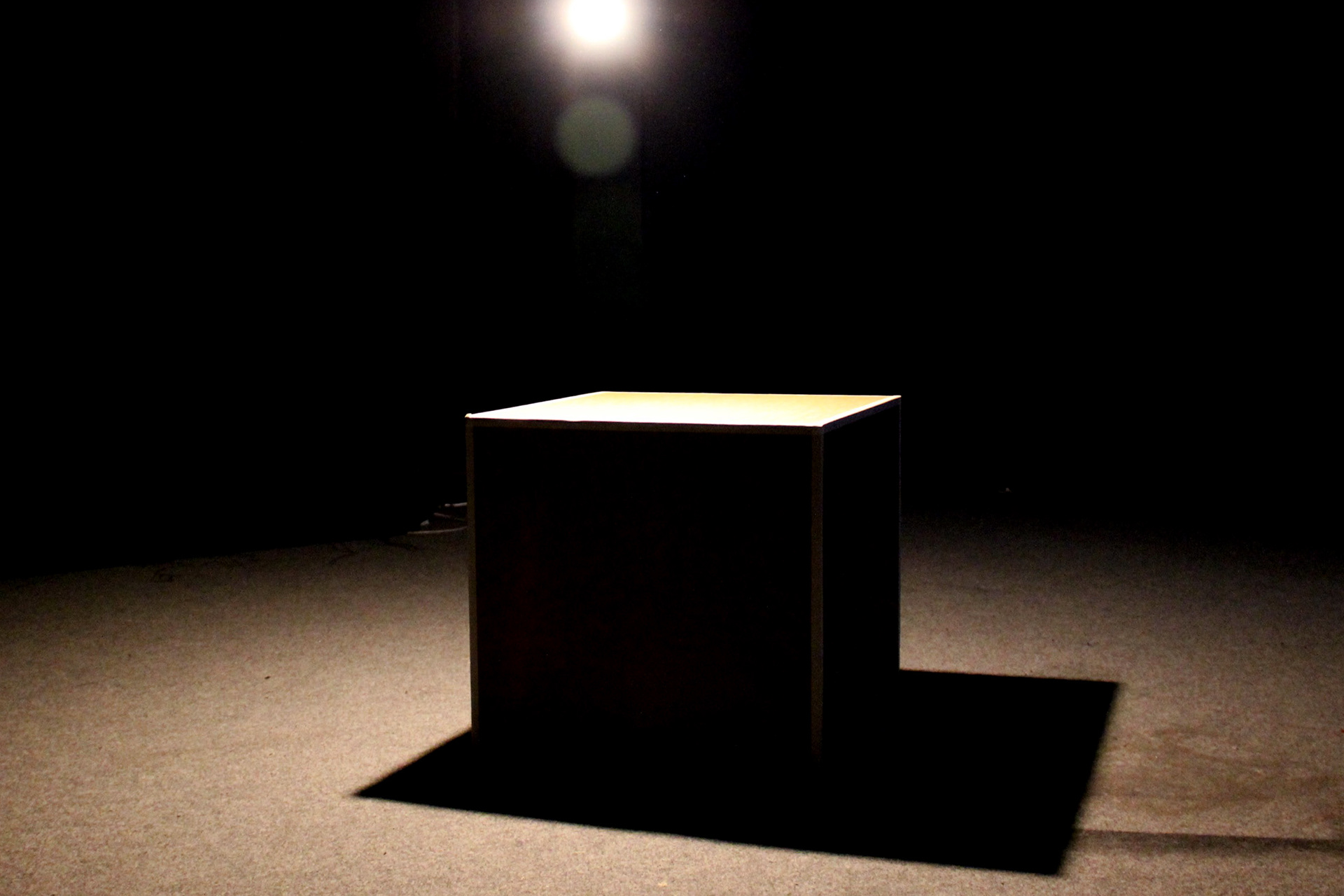
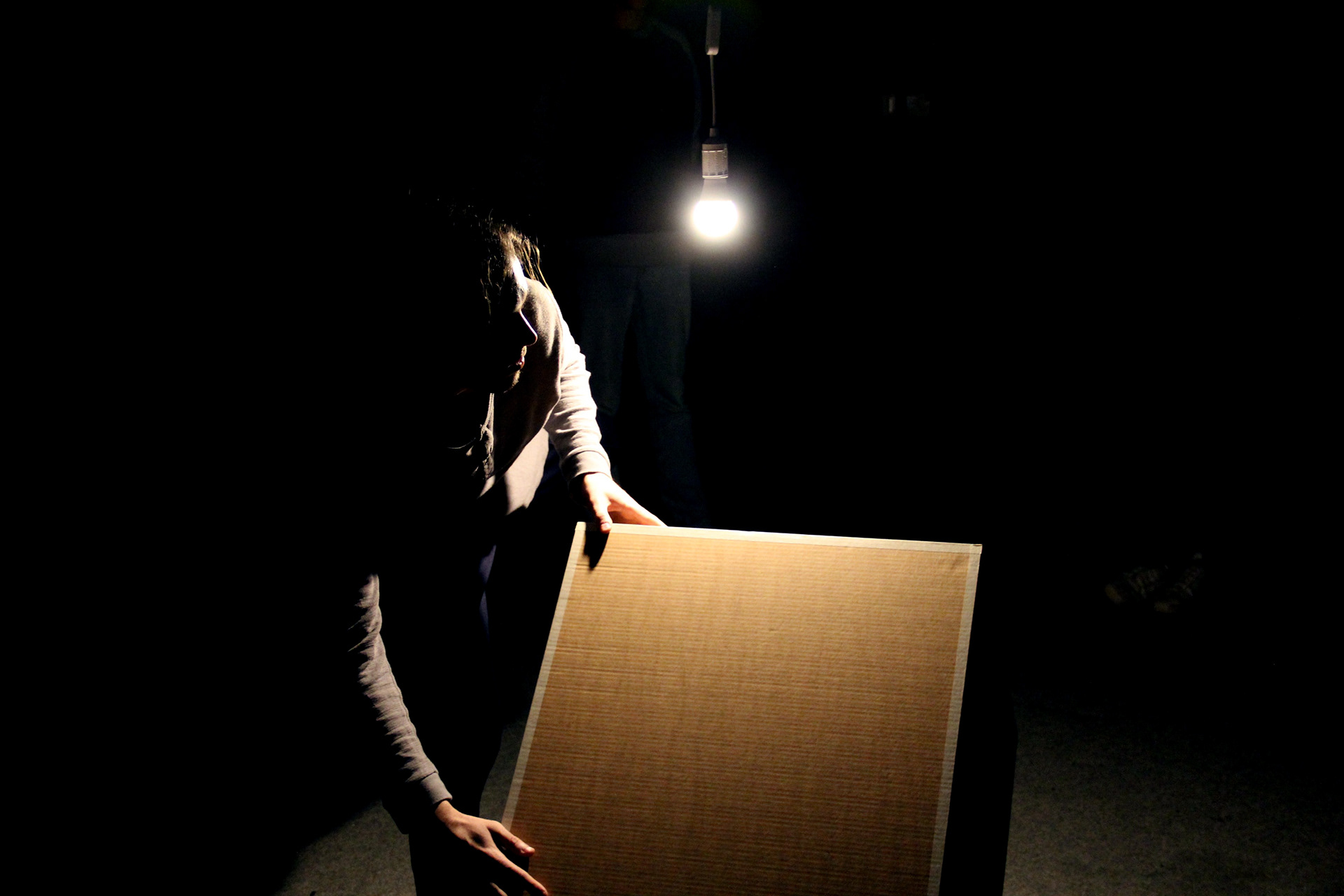
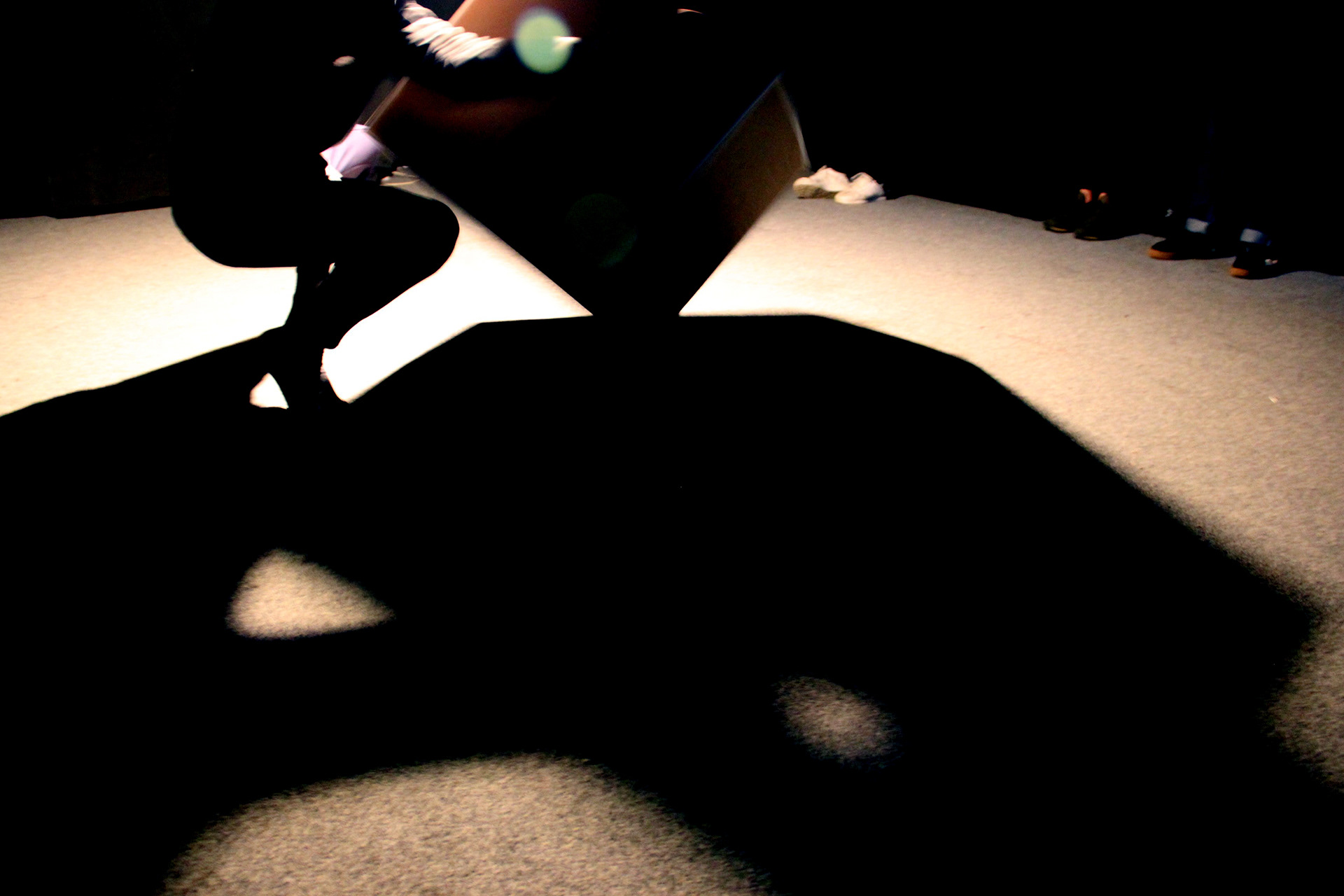
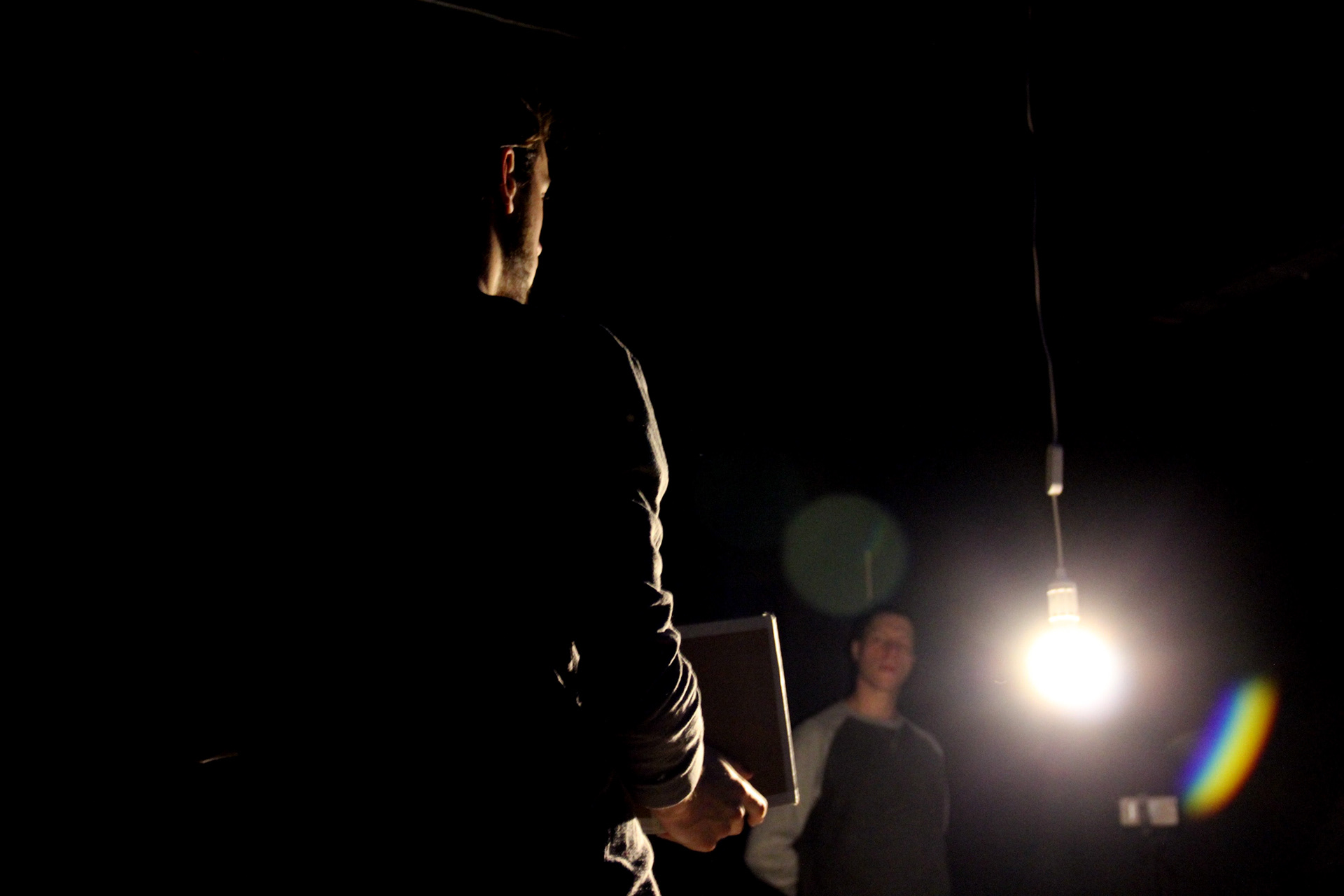
The topic of this performance was a synergy of moving body and music and also space. A tilt sensor tracks the movement of performer and the music is in uenced by the signal from the sensor. In short, the somatic sensation of the performer should have been expanded in an abstract way because of an interactive technology in a performative space.
The extension of somatic sensations was an important topic in Bauhaus in the 1920s, which had been researched selectively, especially in the Oskar Schlemmer‘s performing arts workshops. The Students in his class used to wear the famous geometrical costumes, in order to make it clear that the human body on a stage is always in the spatial regularity and the sense of movement plays a big role by spatial perceptions.
The geometrical costumes limiting the possibilities of free movement helped the performers paradoxically to open a new somatic sensation in a space and they visualized the essence of motion for the audiences too.
The geometrical costumes limiting the possibilities of free movement helped the performers paradoxically to open a new somatic sensation in a space and they visualized the essence of motion for the audiences too.
Our experimental performance in the Isadora-Workshop was a kind of adaptation of these ideas with modern interactive technologies. We made the cubes as an interface between a human body and the motion- sensing technology. The geometrical form requires the performer to find impromptu choreography, which should have been discovered instinctually within a spatial relationship between the body and the objects. His motion influences the rhythm of music and conversely, the rhythm influences his motion.
(Inside the cube is a smartphone running the TouchOSC app. This sends the tilt sensor data of the smartphone via Wi-Fi to Isadora. In Isadora, three audio files are looping in sync, of which only one is audible in the initial state. If the smartphone is tilted to the right / left, the playback speed of the audio files is affected, the music slows down or becomes faster. If it is tilted forwards / backwards, the volume of one of the other two files increases, causing two tracks to mix.)
The form as an interface makes a mutual connection between the body and space. The Audience had a chance to experience the motion with a new type of spatial perception and the music as a spatial expanded media in a performative space.
